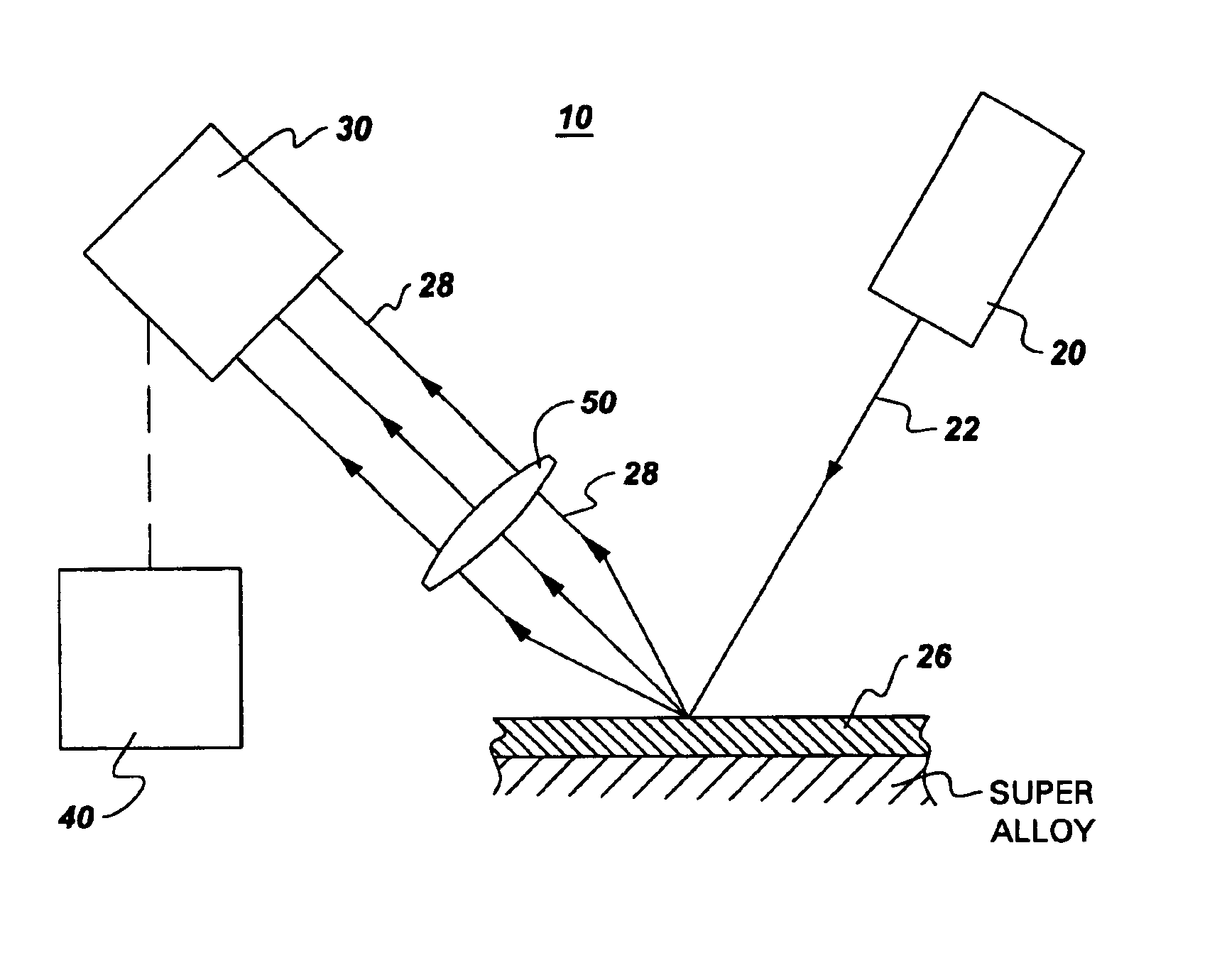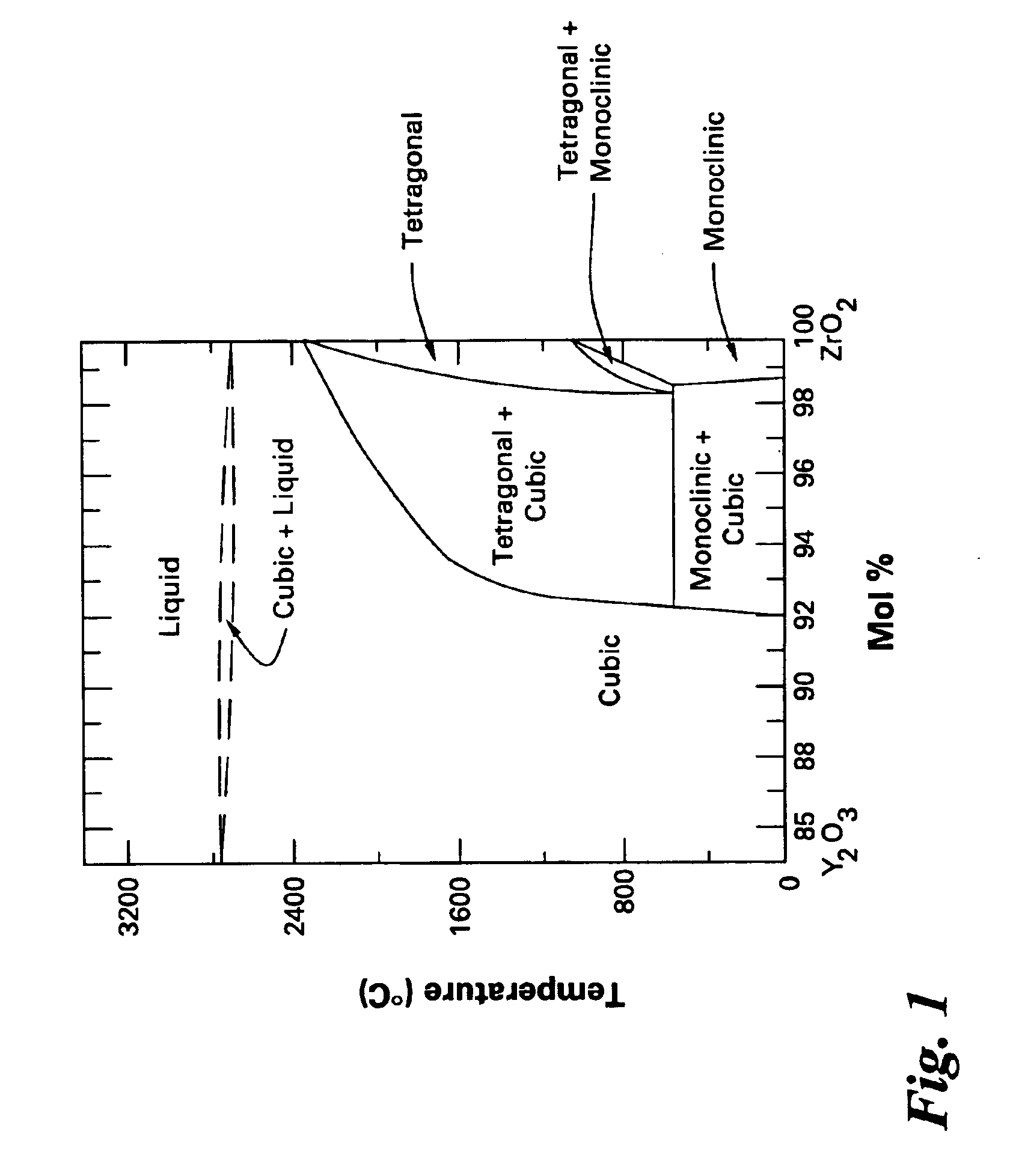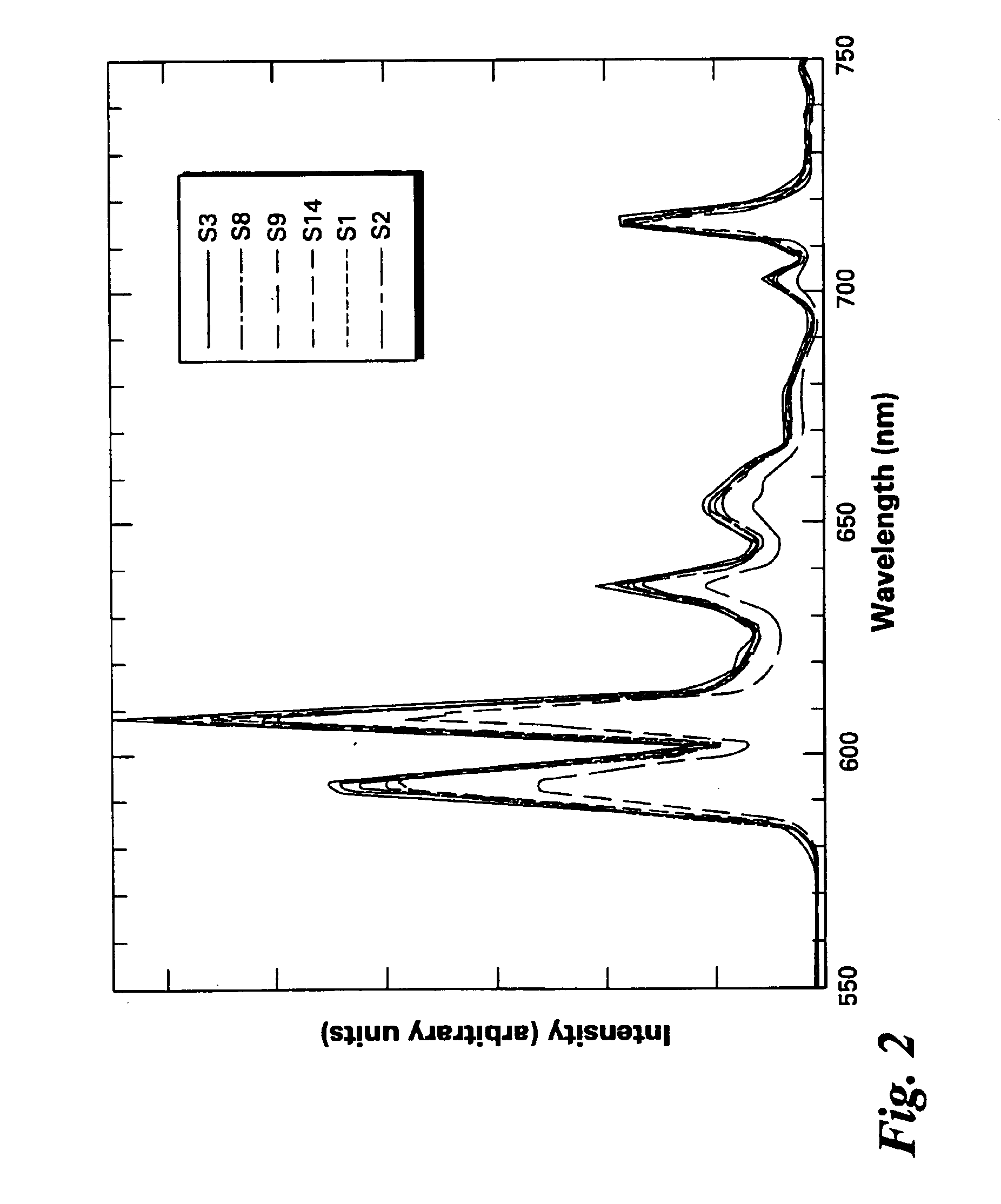Thermal barrier coatings, components, method and apparatus for determining past-service conditions and remaining life thereof
a technology of thermal barrier coating and past-service condition, which is applied in the direction of luminescent dosimeters, optical radiation measurement, fluorescence/phosphorescence, etc., can solve the problems of component failure, coating sputtering, and inability to meet the requirements of the component,
- Summary
- Abstract
- Description
- Claims
- Application Information
AI Technical Summary
Benefits of technology
Problems solved by technology
Method used
Image
Examples
Embodiment Construction
[0024]As used herein, the term “combustion engine” means any engine that generates work using energy derived from combustion of a fuel. A combustion engine can include components or assemblies of components that convert the energy of the combustion to other forms of energy. Thus, the term “combustion engine” includes turbine engines.
[0025]As used herein, the term “elevated temperatures” means temperatures greater than about 700° C.
[0026]Yttria-stabilized zirconia is a material commonly used as thermal barrier coating (“TBC”) for components used in the hot-gas path of gas-turbine engines. This material has many advantages such as high tolerances for thermal shock, low thermal conductivity, and a higher melting point than most oxides. However, one of the limitations of pure zirconia is that it undergoes phase transitions as temperature changes. At temperatures less than 1170° C., the equilibrium phase of zirconia is monoclinic. Between 1170° C. and 2370° C. it is tetragonal, and above...
PUM
| Property | Measurement | Unit |
|---|---|---|
| Percent by mass | aaaaa | aaaaa |
| Nanoscale particle size | aaaaa | aaaaa |
| Nanoscale particle size | aaaaa | aaaaa |
Abstract
Description
Claims
Application Information
 Login to View More
Login to View More - R&D
- Intellectual Property
- Life Sciences
- Materials
- Tech Scout
- Unparalleled Data Quality
- Higher Quality Content
- 60% Fewer Hallucinations
Browse by: Latest US Patents, China's latest patents, Technical Efficacy Thesaurus, Application Domain, Technology Topic, Popular Technical Reports.
© 2025 PatSnap. All rights reserved.Legal|Privacy policy|Modern Slavery Act Transparency Statement|Sitemap|About US| Contact US: help@patsnap.com



